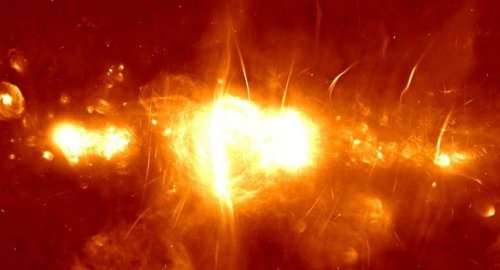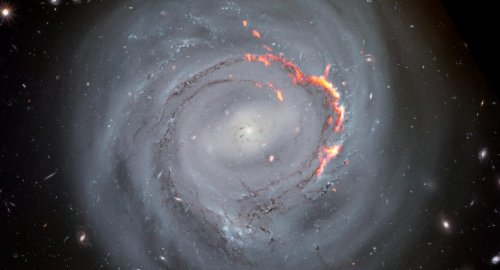
Mysterious Radio Signals Flashing Near Galactic Center

- 7-09-2021, 20:47
INA - SOURCES
A newly discovered source of radio signals, located not far from the center of the galaxy. It's called ASKAP J173608.2-321635, and astronomers have been unable to figure out what kind of cosmic object best fits its weird properties.
"We have presented the discovery and characterization of ASKAP J173608.2-321635: a highly-polarized, variable radio source located near the Galactic Center and with no clear multi-wavelength counterpart," explain a team of astronomers led by Ziteng Wang of the University of Sydney in Australia.
“ASKAP J173608.2-321635 may represent part of a new class of objects being discovered through radio imaging surveys."
ASKAP J173608.2-32163 was discovered using the Australian Square Kilometre Array Pathfinder (ASKAP), one of the most sensitive radio telescopes ever built, designed to peer deep into the radio Universe.
It's already proven adept at finding things we have never seen before, such as Odd Radio Circles (we don't know what those are, yet), undiscovered galaxies, and mysterious fast radio bursts.
ASKAP J173608.2-32163 might turn out to be a known type of cosmic object, but if it does, it could end up stretch the definition of whatever object that is.
This supports and validates the ASKAP detections, but also suggests that the source is quite elusive – there were no MeerKAT or ATCA detections prior to that date. Nor did the source appear in X-ray and near-infrared observations, nor in archives of radio data collected by multiple instruments that the researchers checked.
Which leaves a pretty fascinating mystery. The polarization suggests scattering and magnetization, possibly partially due to dust and magnetic fields in the interstellar medium between us and the source, although it's possible that the source itself is also highly magnetized.
However, the object does share some properties with a type of mysterious signal spotted near the galactic center. These are known as Galactic Center Radio Transients (GCRT), three of which were identified in the 2000s, and more of which are awaiting confirmation.
These sources are also yet to be explained, but they have several features in common with ASKAP J173608.2-32163.
If ASKAP J173608.2-32163 is a GCRT, ASKAP's detection could help us find more such sources, and figure out what they are.
"Given that ASKAP J173608.2-321635 is typically not detected and can turn off on timescales from several weeks to as quickly as a day, our sparse sampling (12 epochs over 16 months) suggests that there could be other similar sources in these fields," the researchers write.
"Increasing the survey cadence and comparing the results of this search to other regions will help us understand how truly unique ASKAP J173608.2-321635 is and whether it is related to the Galactic plane, which should ultimately help us deduce its nature."
White House: Talks with Iran were very positive and constructive
- International
- 09:40
US Embassy: Trade Mission of 60 Companies Visits Iraq
- politics
- 25/04/07
CBI unveils comprehensive reform plan to modernize banking sector
- Economy
- 25/04/07
Al-Sudani Meets Delegation from J.P. Morgan Bank
- politics
- 25/04/08












